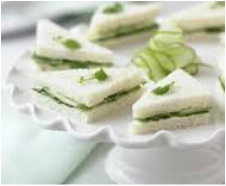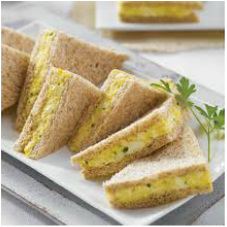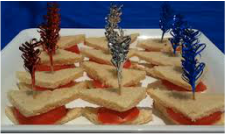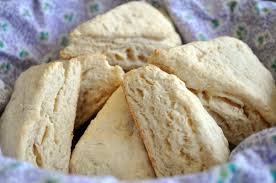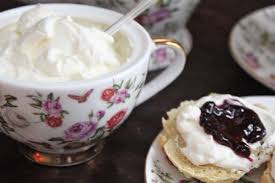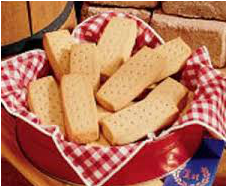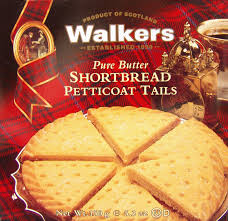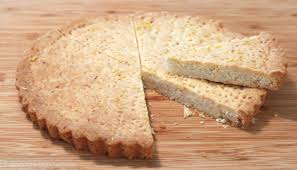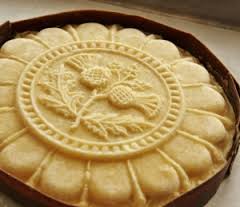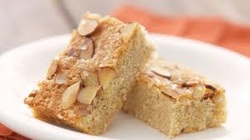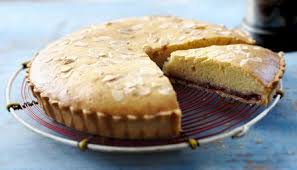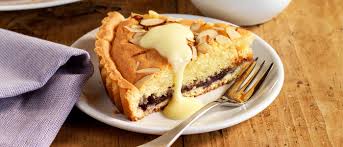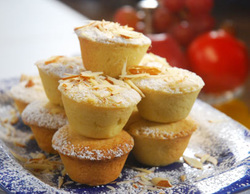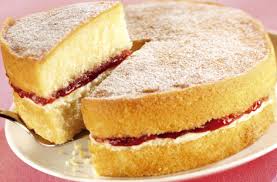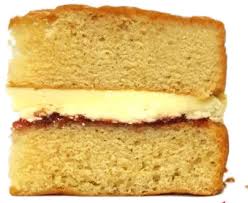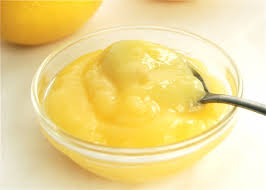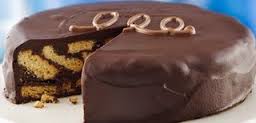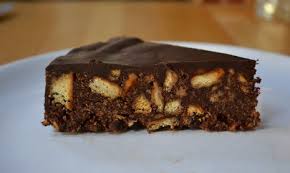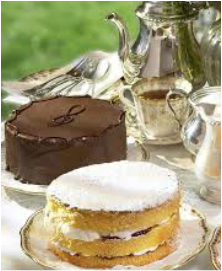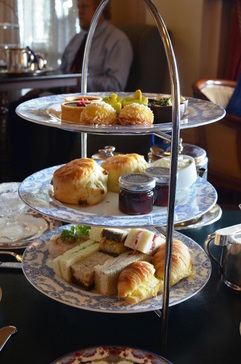
All the foods and beverages on our classic tea menu should be recognizable to the over 25% of Americans with British ancestry as well as expat Brits around the globe. Iconic finger sandwiches, scones, clotted cream, little tarts and buttery cookies are all on the blue print. What is not found are any foods which are messy, strongly spiced, non-British, and/or trendy. This is the time to polish the silver, dust off the best china, and iron the snowy tea cloths. When in doubt as to what to serve, use this menu. For Queen and Country: Keep Calm and Carry On!
Menu
Beverages:
English Breakfast or Earl Grey Tea, served hot with sugar, lemon OR milk (never both) with milk poured into the cup first (why? who knows)
Sherry
Savories:
Stilton with Wheat Meal Biscuits and Branson Pickle Relish
Tea Sandwiches:
Classic Cucumber Sandwiches on buttered, thinly-sliced white bread,
Egg Salad on buttered brown bread,
Tomato on buttered bread (either brown or white)
Breads and Scones:
Cream Scones with Clotted Cream and Strawberry Jam
Sweets:
Shortbread Cookies
Almond Tea Cakes
Bakewell Tart
Victoria Sponge with Lemon Curd
Chocolate Biscuit Cake
Beverages:
English Breakfast or Earl Grey Tea, served hot with sugar, lemon OR milk (never both) with milk poured into the cup first (why? who knows)
Sherry
Savories:
Stilton with Wheat Meal Biscuits and Branson Pickle Relish
Tea Sandwiches:
Classic Cucumber Sandwiches on buttered, thinly-sliced white bread,
Egg Salad on buttered brown bread,
Tomato on buttered bread (either brown or white)
Breads and Scones:
Cream Scones with Clotted Cream and Strawberry Jam
Sweets:
Shortbread Cookies
Almond Tea Cakes
Bakewell Tart
Victoria Sponge with Lemon Curd
Chocolate Biscuit Cake
|
Recipes Included:
Classic Cucumber Sandwiches Cucumber Sandwiches have been a staple of Afternoon Tea in England for generations. Their charm lies in their simplicity. Fresh cucumbers, newly picked from the garden, are thinly sliced, lightly sprinkled with salt and pepper, and placed between buttered slices of freshly baked white bread. Classic Cucumber Sandwiches are a true example of the old adage, “Less is more.” Egg Salad Sandwiches Egg Salad Sandwiches are appropriate in all four seasons. They are tasty and easy to make. Start by boiling 6 eggs for 10 minutes, rinsing them in cold water and chilling them in cold water with a few ice cubes added for at least half an hour. This process will make peeling them a little easier. Peel the eggs and roughly chop them into a medium sized bowl. Add mayonnaise to taste; start with about half a cup or less. Add about a tablespoon of prepared yellow mustard. Stir this mixture and sprinkle it liberally with salt and freshly ground pepper. Adjust the ingredients to your liking, and your Egg Salad Sandwich Filling is ready to go. Refrigerate it until just before you make the sandwiches. We feature this simple classic on our British Afternoon Tea menu. Best Summer Tomato Sandwiches The British prefer small sandwiches that include only one or two ingredients, and they love their summer vegetables. We agree that sliced tomatoes, fresh from the garden and never refrigerated, offer a pure and intense taste that evokes memories of childhood and seasons past. Honor your ripe tomatoes with the freshest bread you can find. Cream Scones We are grateful to the British for inventing, these warm little biscuit-like treats that belong at every Afternoon Tea party. There are many recipes for Scones, but this classic version contains both butter and cream to create the perfect texture for serving with Mock Devonshire Cream and Strawberry Jam. Mock Devonshire Cream For our Classic British Afternoon Tea, we want to come as close as possible to serving authentic Devonshire Clotted Cream with our Cream Scones and Strawberry Jam. Our Mock Devonshire Cream is a thick, spreadable combination of sour cream, whipped cream, powdered sugar and a touch of vanilla. We don’t think you will get any complaints from your British friends. Shortbread Cookies Shortbread cookies are one of Scotland’s greatest gifts to the world. (You will forgive us for suggesting that Shortbread is even more important than golf!) This most elemental of desserts is composed of only three ingredients—flour butter and sugar. Shortbread, which has been a Scottish staple since at least the 1200s, reflects the hardy culture of the highlands. This ancient culture manages to thrive in a climate and terrain that provide only the most rudimentary resources for survival. The Scots have been nurtured by healthy and wholesome oatmeal for centuries and have clothed themselves in the exquisitely patterned tartan plaid wool provided by their own intrepid sheep. These very sheep also add meat and cheese to the very basic Scottish diet, which as we know, has also been fortified by Scotch whiskey, a tonic against the cold weather. Today, Walker’s Shortbread, popular throughout the British Isles, is also Scotland’s largest export to the rest of the world. Let us begin with the name of this delightful little cookie. The word “short” does not refer to the height of the cookie but to the fact that it is full of shortening, in this case a high percentage of butter. The high butterfat content gives these cookies a very appealing crunchy texture. The word “bread” harkens back to a time when “bread” referred to any baked item that contained flour. These hearty little confections keep for long periods of time and can be carried along on journeys and mailed to friends as very welcome gifts. They require no refrigeration. They can also be made with no modern equipment other than an oven, though you can make yours with a food processor. Shortbread can be made in many shapes, from rectangular “fingers” to squares to fan shaped wedges known as “petticoat tails.” You can even buy shortbread molds that will produce decorative patterns on the cookies when they are removed from the pan. Some recipes add small amounts of salt or vanilla, and there are any number of chocolate, ginger, lemon or other flavored shortbread recipes. Our recipe creates the original three-ingredient basic shortbread cookie. You can sprinkle plain or colored sugars on the dough before baking, but shortbread really needs no decoration. Almond Tea Cakes The classic British Afternoon Tea offers a variety of finger foods, which the guests can enjoy in small servings, thus providing a wide array of treats to sample. These little square Almond Tea Cakes, similar to French Petites Fours, but much easier to make, are consumed in a single delicate bite. After experiencing the charming almond flavor of these tiny cakes, the guest can still appreciate a small shortbread cookie, a little slice of Bakewell Tart and perhaps a small serving of Victoria Sponge and Chocolate Biscuit Cake. Bakewell Tart Very appropriately, this delectable pastry was developed in the town of Bakewell in Derbyshire, England. It combines a buttery crust similar to shortbread with a layer of jam and a ground almond topping called frangipane. Frangipane itself is an ancient food of Italian origin. The word frangipane means “break the bread” in Italian. Frangipane is similar to marzipan, a sweetened almond and butter confection popular throughout Europe. The French became especially fond of frangipane, which is a featured ingredient in many French pastries, including Petites Fours, Jesuit and King Cake, traditionally served on the Feast of Epiphany. In England, pastry shops and tearooms sell Bakewell Tarts as small individual tartlets, but a Bakewell Tart can also be made as a single large tart sliced and served in small wedges. Our recipe is the latter, featuring cherry preserves and a puffy frangipane topping. While this dessert may seem exotic and difficult, it is in fact very easy to make, as the pastry crust, the ground almonds and the frangipane topping can all be prepared in a food processor without even cleaning the bowl between the steps. The pastry crust dough needs to chill for at least 1 hour before you roll it out, so you might want to make one of the other items on this menu, such as the Chocolate Biscuit Cake, while the dough is chilling. We think your guests will fall in love with your gorgeous and surprising Bakewell Tart. Victoria Sponge with Lemon Curd This famous British dessert is so called because it was apparently Queen Victoria’s favorite teatime cake. It is a golden sponge cake that can be served plain or as a two layer cake sandwiched together with lemon curd, jam or berries and whipped cream. It is therefore good in all four seasons, and the tea party host can choose to enhance the sponge cake with the season’s best produce such as strawberries in the summer or spiced apple butter in the autumn. Since the Bakewell Tart that you will also be serving at your British Afternoon Tea contains cherry preserves or raspberry jam, we suggest filling your Victoria Sponge with lemon curd for visual contrast and ease of preparation. Our recipe for Victoria Sponge is an adaptation of an authentic Victorian version from Mrs. Beeton’s Book of Household Management, first published in England in 1861. The author, Isabella Mary Beeton, is justly famous as one of the first compilers of familiar recipes and general advice on managing a well-run home. Lemon Curd Lemon Curd, another British creation, is a sweet and tart condiment that resembles both custard and marmalade. You will need fresh lemon juice, eggs, sugar and butter to make this classic spread from scratch. Your homemade Lemon Curd will serve as the filling for the lovely, light Victoria Sponge Cake that you will present, along with the other sweets, hopefully on your best cake stand, at your British Afternoon Tea. Lemon Curd is also a versatile filling for cookies, tarts, any kind of layer cake, and of course it is traditionally served at Afternoon Tea with Scones. Chocolate Biscuit Cake This easiest of all desserts is a relative newcomer in the panoply of British sweets. Prince William made his childhood favorite famous when he chose Chocolate Biscuit Cake as his Groom’s Cake when he married Catherine Middleton. This no-bake “cake” is really just a combination of melted chocolate and broken cookies mixed together, poured into a pan and refrigerated. The only tricky thing about this recipe is the fact that the word “biscuit” in England refers to a “cookie” in America. We offer an Irish version of this recipe, which calls for “digestive biscuits,” slightly sweetened cracker-like cookies that are also very good with cheese. Digestive biscuits can be found in British import shops and the “foreign foods” section of many grocery stores. There are many versions of Chocolate Biscuit Cake, some containing golden syrup, whipping cream, raisins, nuts or candied fruits. This very basic version, adapted from edible-ireland.com, features espresso powder to deepen the flavor of the dark chocolate and sweetened condensed milk to create a creamy texture. If you cannot find digestive biscuits, you can substitute any kind of plain commercial butter cookies such as Lu’s Le Petit Beurre, or Pepperidge Farms Chessmen, which we used with fantastic results. Look carefully at the package, as you will need 7-9 ounces of cookies. We recommend making the Biscuit Cake in an 8” square pan and serving it in very thin slices, as it is extremely rich and fudge-like, but you can also make it in a 9” cake pan and serve it in thin wedges. |

